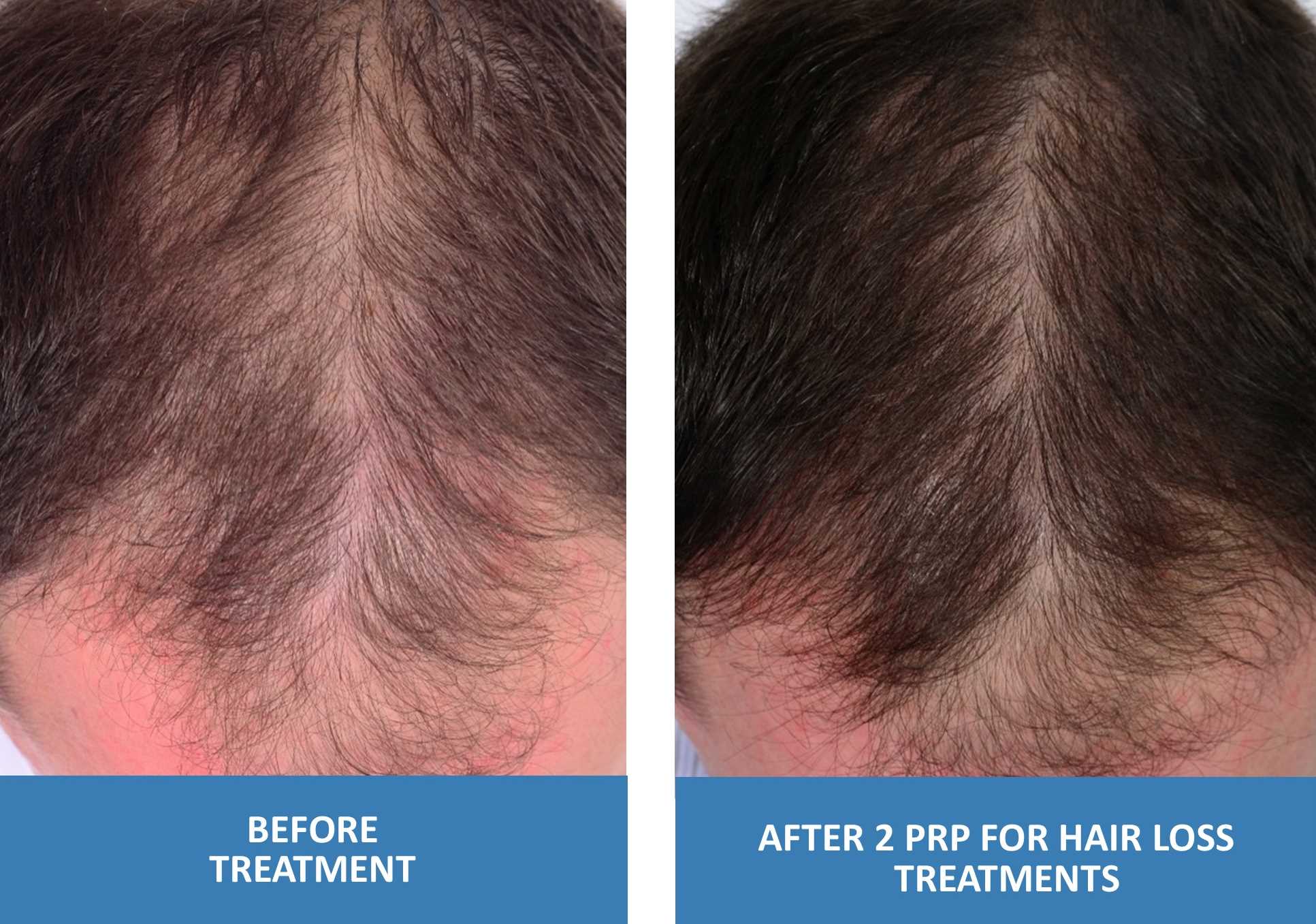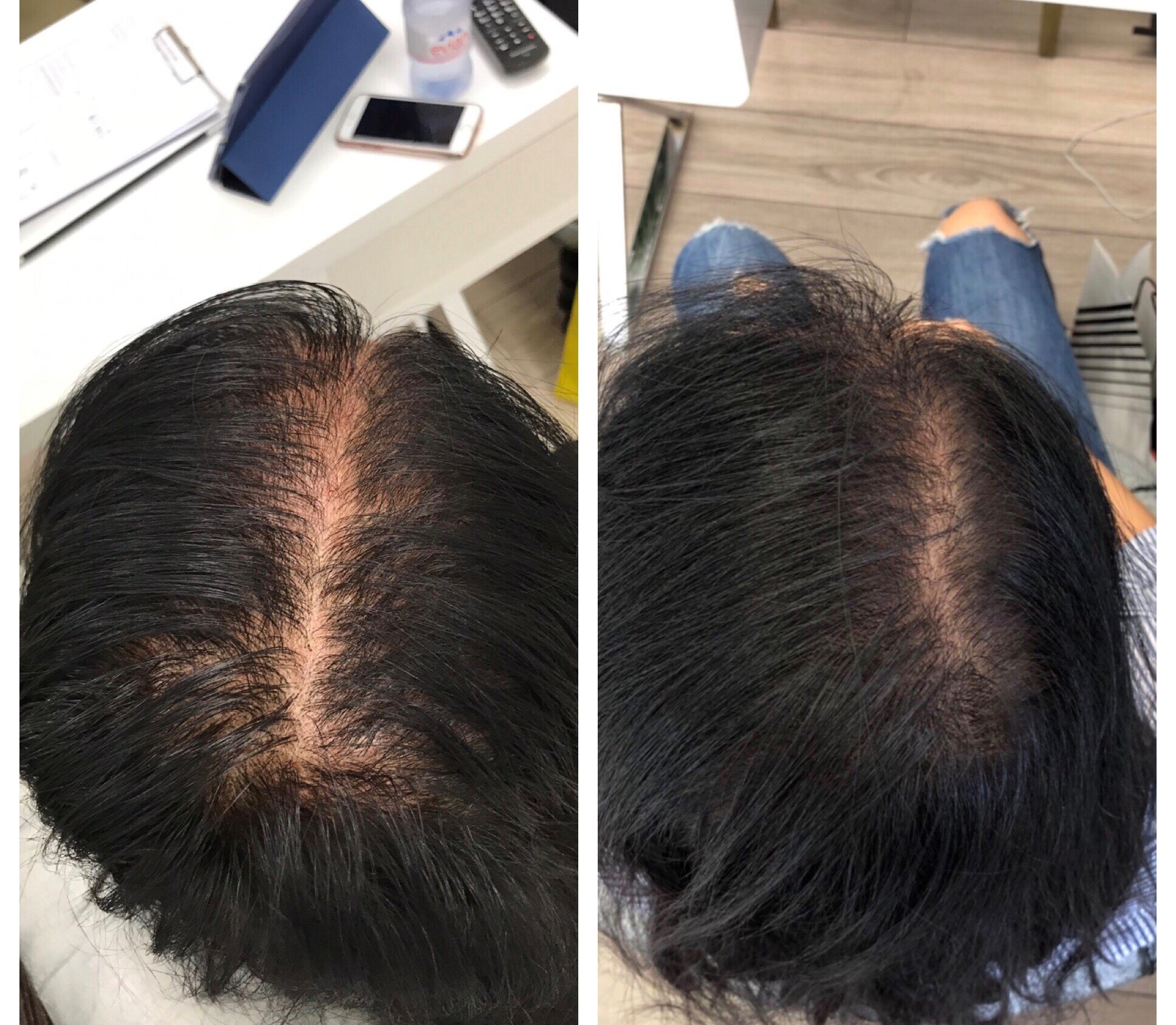Table Of Content

Several studies exploring the effects of PRP on hair loss found it is a safe, effective way to promote hair growth. Growth factors, in a sense, play the role of messengers, signaling skin cells to function. In fact, they've been used in medicine to treat a range of health issues, including arthritis, signs of aging, etc. The good news for anyone with thinning hair, says Zeichner, is that growth factors can "help stimulate the activity of the hair follicles and promote new hair growth." As with most procedures, there is a careful process involved in using PRP for hair regrowth, beginning with a standard blood draw from the patient's arm.
PRP Therapy Benefits
Alopecia causes vary, and for androgenetic alopecia specifically, various risk factors from genetics to age could be the root of your symptoms. From making comments about cancer to suggesting treatments that worked for friends facing hair loss, here are the top statements experts avoid voicing... Other times, a local anesthetic is mixed with the PRP to reduce any discomfort. In this instance, preparation for PRP injections would involve following your surgeon’s recommendations before surgery. The procedure is performed in one day with no incisions or stitches required. PRP Hair Restoration is a fast and safe technique offering the most natural results compared to other hair loss procedures.
Video How to treat hair loss - ABC News - ABC News
Video How to treat hair loss - ABC News.
Posted: Fri, 02 Jun 2023 07:00:00 GMT [source]
Benefits and Effectiveness of PRP for Hair Loss

Patients should avoid anti-inflammatory agents such as NSAIDs and aspirin for up to 14 days after the procedure, as they may interfere with the beneficial effects of PRP. Keep in mind that results will look different for everyone based on overall health, blood platelet levels, and hair health. For the best results, choose a cosmetic surgeon who’s affiliated with a major medical center, such as Cleveland Clinic.
Light or laser therapy
Do not look for the cheapest or the most expensive office, but rather investigate experience and reputation above all. In my opinion, PRP is best performed after other non-invasive treatments have already been enlisted, including minoxidil and finasteride. Avoid using scalp products or camouflage products prior to the procedure.
Side Effects and Complications

The researchers, therefore, recommend PRP every 6 months for best results. These treatments that emit red- or near-infrared light are believed to stimulate hair follicles to help hair grow, with a lower risk of side effects compared to topical creams and oral medications. PRP may help promote increased blood flow to sites and blood vessel development. It can also help hair follicle turnover, reverse hair follicle miniaturization, and may help stimulate follicular stem cells, all of which lead to improvement of hair growth. Doctors inject plasma into the scalp where hair loss has occurred.
PRP Injections: Vampire Facials, Facelifts and Breast Lifts - RealSelf.com
PRP Injections: Vampire Facials, Facelifts and Breast Lifts.
Posted: Tue, 17 Oct 2023 07:00:00 GMT [source]
Here's What You Need to Know About Platelet-Rich Plasma Treatment for Hair Loss
The exact mechanism of action for how PRP promotes hair growth is unknown. PRP contains at least six different growth factors, and the individual and synergistic effects of these proteins on hair growth cannot easily be identified. In addition, PRP contains at least 30 other substances, including chemokines, clotting factors, and immune mediators, all or some of which may influence hair growth as well. Growth factors in PRP that are most involved in hair growth include Fibroblast Growth Factor (FGF), Vascular Endothelial Growth Factor (VEGF), and Epidermal Growth Factor (EGF). Growth factors can increase the duration of the anagen, the growth phase of hair, and may increase the thickness of the hair shaft. The idea is that injecting PRP into damaged tissues will stimulate your body to grow new, healthy cells and promote healing.
Harvard Health Blog
Many popular cosmetic treatments are delivered with needles, such as Botox to iron out wrinkles and fillers to plump lips. A “vampire facial,” or platelet-rich plasma microneedling procedure, involves drawing a client’s own blood, separating its components, then using tiny needles to inject plasma into the face to rejuvenate the skin. If you have healthy hair on the back or side of your head, a doctor can surgically remove hair strands from those areas and graft them into your scalp in a bare area.
In women, female-pattern hair loss typically affects the crown or top of the head first, Mirmirani says. Women may notice that their part is becoming wider or that their scalp is more visible. Dr. Sclafani injects very small amounts of PRP into areas of thinning. Typically, he injects 0.1 cc to 0.2 cc, about a centimeter apart, into the mid-dermis in the treatment area.
More in Health
Co-hosts Michelle Lee and Jenny Bailly called upon a dermatologist and trichologist (don't worry, they'll explain) to talk all things scalp, including hair loss. As with all aspects of hair loss management, finding an experienced and compassionate provider is critical to success and satisfaction. True hair loss specialists have mastered many approaches to hair loss. Some are very effective and very inexpensive, and when appropriate, these should be recommended first. Unfortunately, some providers see PRP as an easy way to make a profit and recommend this modality when other choices are preferred. PRP is often administered along with microneedling, another method of stimulating growth factor release.
For this 3-step process, blood is first drawn from a patient and PRP is derived from spinning the blood in a centrifuge. This separates the blood and allows PRP to be pipetted off and then injected into a patient’s scalp. One of the most popular current uses is in the treatment of hair loss in both men and women.
The New Mexico Department of Health began investigating the spa in the summer of 2018 after it was notified that a woman in her 40s had tested positive for HIV even though she had no known risk factors. The woman reported exposure to needles through the procedure at the clinic that spring. Finally, keep in mind that the same healthy habits recommended for maintaining your physical health will also help your hair. Try to find ways to manage stress, and strive for a well-balanced diet that includes plenty of fruits and vegetables. Alopecia areata is an autoimmune disease that causes hair to fall out in nickel- or quarter-size patches.
If you are considering PRP injections, be sure to talk with your health care provider about all the benefits and risks. Our team of experts at the Johns Hopkins Musculoskeletal Center offers platelet-rich plasma injections to help alleviate pain, improve mobility and decrease inflammation. Early studies indicate that PRP injections may help treat osteoarthritis pain and stiffness by modulating the joint environment and reducing inflammation, but research is growing. At this point, without a standardized protocol for injections, the authors explain, it is difficult to conclude that the treatment is effective. People with autoimmune conditions are not good candidates for PRP therapy, as the injections may trigger an overactive immune response that can lead to swollen lymph nodes, fever, or joint pain. PRP therapy should only be performed by a board-certified dermatologist or plastic surgeon with the training and expertise to perform the procedure safely.
It’s another expensive treatment that isn’t generally covered by insurance, but it tends to be a long-lasting solution. A review study published in 2022 found that it significantly increases hair diameter and hair count in patients with several types of alopecia. It typically isn’t covered by insurance, and it can be expensive, Mirmirani says. A variety of treatments have been developed to help regrow hair and thicken existing hair on patients with alopecia, dermatologists say. Their effectiveness largely depends upon what type of alopecia you have and how quickly you start treatment.
PRP injections are a minimally invasive, non-surgical hair restoration procedure providing an effective treatment for female pattern hair loss, male pattern baldness, and hair thinning. This hair loss treatment promotes natural hair growth by rejuvenating hair follicles and encouraging healthy, new hair growth. PRP (platelet-rich plasma) for hair loss is a treatment utilising a biological product prepared from the patient’s own blood. Through separating the plasma, the cellular components of the blood including the red blood cells and leucocytes are removed and it is these components that inhibit the repair and regeneration process. The treatment increases hair density and reduces hair loss to normal levels. Improvements are seen within 90 days, with hair growth continuing to improve in some patients over 6 months.

No comments:
Post a Comment